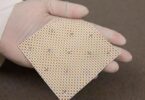Tissue engineering, also known as regenerative medicine, is the branch of bioengineering that uses the combination of cells, materials engineering methods, biochemistry and physicochemistry to improve or replace biological functions.
In most cases, the creation of tissues and biological structures in vitro requires considerable knowledge of the cell to ensure its survival, growth and encourage its functionality.
In recent years, tissue engineering has made significant advances. The foundations of this field date back to the early 20th century, when researchers first attempted to grow cells outside the body.
One of the greatest advances in tissue engineering was the isolation of stem cells.
Stem cells have captured the imagination of researchers for their ability to become any type of cell in the body.
Stem cells can give rise to the various cells that make up our tissues and organs. That is why they are essential for the growth and development of the human body.
Tissue engineering fundamentally uses cells grown and/or genetically modified in the laboratory as engineering material.
Tissue engineering is a field that has generated great scientific interest thanks to discoveries related to stem cells, intelligent biomaterials that activate cells to induce regeneration and new technologies applied to this field, such as 3D bioprinting.
Currently and with the help of 3D printing, science is moving towards developing techniques that allow us to build tissues and organs in the laboratory.
The future of this technology is already beginning to be a reality: it is currently possible to print skin and cartilage, and it can also be reproduced, for example:
– Bioartificial Liver – Among the research advances, liver support using live hepatocytes has been produced.
– Artificial pancreas – research covers the use of islets of Langerhans to produce and regulate insulin, particularly in cases of diabetes.
– Artificial bladders – At Wake Forest University, artificially developed bladders have been successfully implanted in seven people, within a very long-term experiment.
– Cartilage – laboratory-grown tissue has been used successfully to repair knee cartilage.
Tissue engineering is of utmost importance because it increases life expectancy and contributes to a healthy old age, allowing the function of our organs to be maximally extended. That is why it has become a promising field of medical science that offers a possible solution to the serious shortage of organs available for transplants.
FONT:
https://es.wikipedia.org/wiki/Ingenier%C3%ADa_de_tejidos
https://www.quimica.es/enciclopedia/Ingenier%C3%ADa_de_tejidos.html









